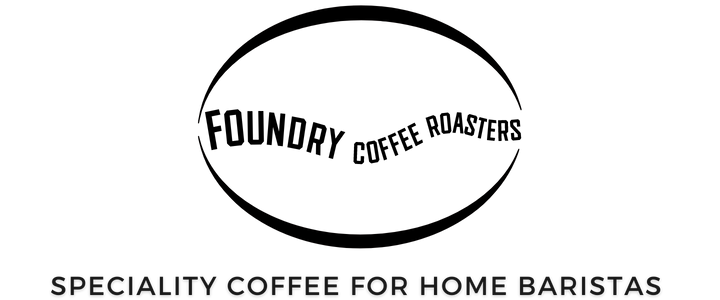-
Buy Coffee
-
Buy Other Stuff
-
Everything Else
ORDERS PLACED NOW WILL BE SHIPPED ON MONDAY 29th DECEMBER - (more info here)
April 17, 2023
TLDR: The lighter the coffee colour is, the higher the number. For reference, the darkest coffee we ever released was '120', the lightest, '135'. So, you can expect all our coffee to be somewhere between those two numbers.
Every so often, we get asked about whether our beans are roasted light or dark. It’s one of those questions that seems straightforward, but until now, we've struggled to provide a useful answer.
Part of the problem is that people often conflate strength with roast degree, which leads to confusion. Unfortunately these concepts are also deliberately mixed up by the commodity coffee industry for marketing purposes. Bags of coffee that contain ratings for ‘strength’ when they actually mean something else is far from helpful. In this context, 'strength' should be swapped for 'bitterness level'.
Anyhow, we've already talked about this in another blog post, which you can read here. (TLDR: if you want stronger coffee, use more in your brew).
In this post, I want to focus on roast degree, or more specifically roast colour.
As long as I can remember, dark roasted coffee has been a thing. Taken to it’s extreme, this is coffee that will have progressed past second crack, the second major reaction that happens in the roasting process. The result of this event is that much of the oil contained within the bean is forced onto the outside of the coffee, giving the beans that shiny look.
We would also consider coffee where there is ‘roastiness’ evident in the brew, a dark roast too. ‘Roastiness’ causes bitter, astringent notes to develop in the coffee. This happens a lot earlier than 'second crack' in the roasting cycle. For us, the presence of roastiness, means that the coffee is over-roasted.
At this point, it’s good to remember that if that’s how you like your coffee, that’s fine. We all like different things. We try to avoid ‘roastiness’ in our coffee, so it’s likely that you may prefer coffee from a roaster who embraces it, if that's your thing.
So, for us at least, a dark roast begins where a medium roast ends.
That’s one half of the equation. Pinpointing where ‘light’ becomes ‘medium’ is harder though and largely a question of preference and perspective. When pushed, I say that we roast ‘medium’. Whilst being aware of the limited helpfulness of this statement, it feels like all I can say.
I would define ‘medium’ as not too light, not to dark. Now you can see where the problem lies.
There are machines and instruments that can analyse the colour of the coffee and give us a number that represents that colour. Indeed, we use one of these machines in our roastery. We have started to publish this number on our website for each coffee in the hope that it will help you to decide which coffee to buy.
The lighter the coffee colour is, the higher the number. For reference, the darkest coffee we ever released was '120', the lightest, '135'. So, you can expect all our coffee to be somewhere between those two numbers. If you tried some of our beans and want a darker roast next time, go for a lower number, or if you want to go lighter, go for a higer colour reading.
I'd be interested to hear your thoughts on this. Is it useful? Would you like us to do more? Head over to our Discord server and share your thoughts.
